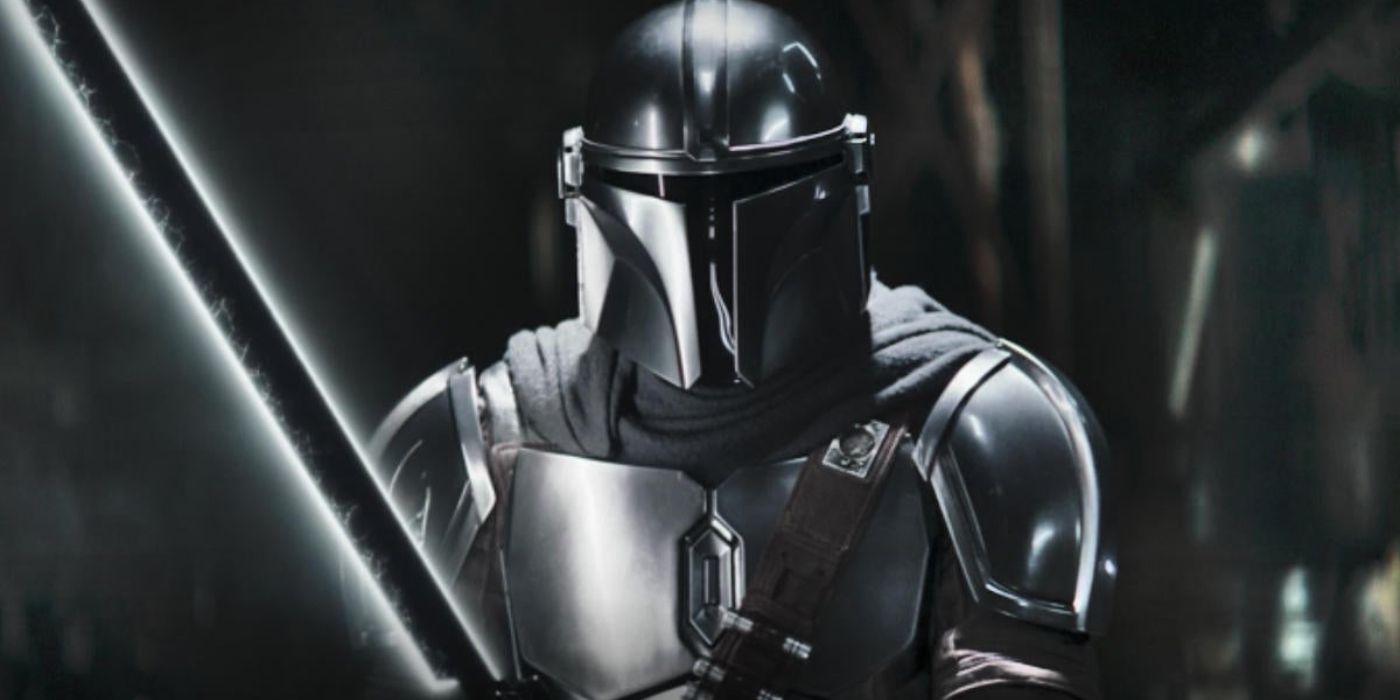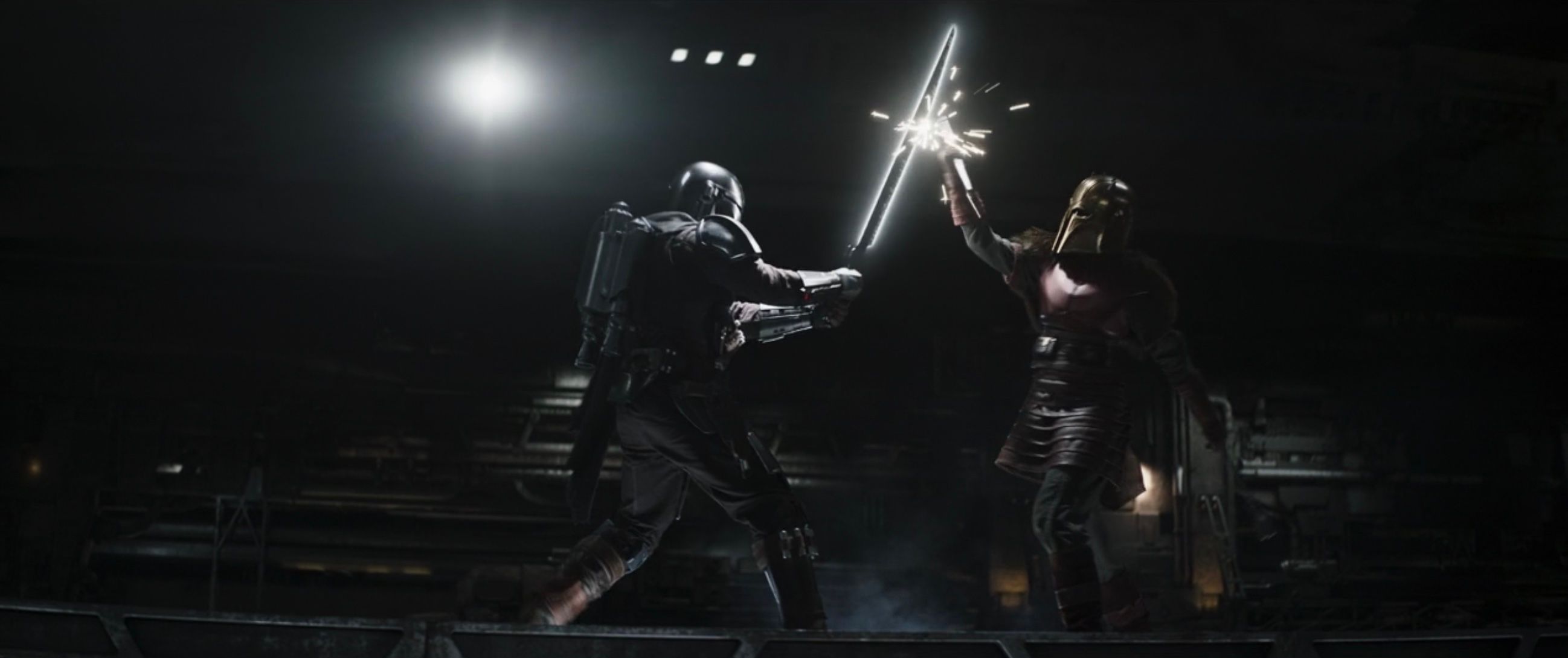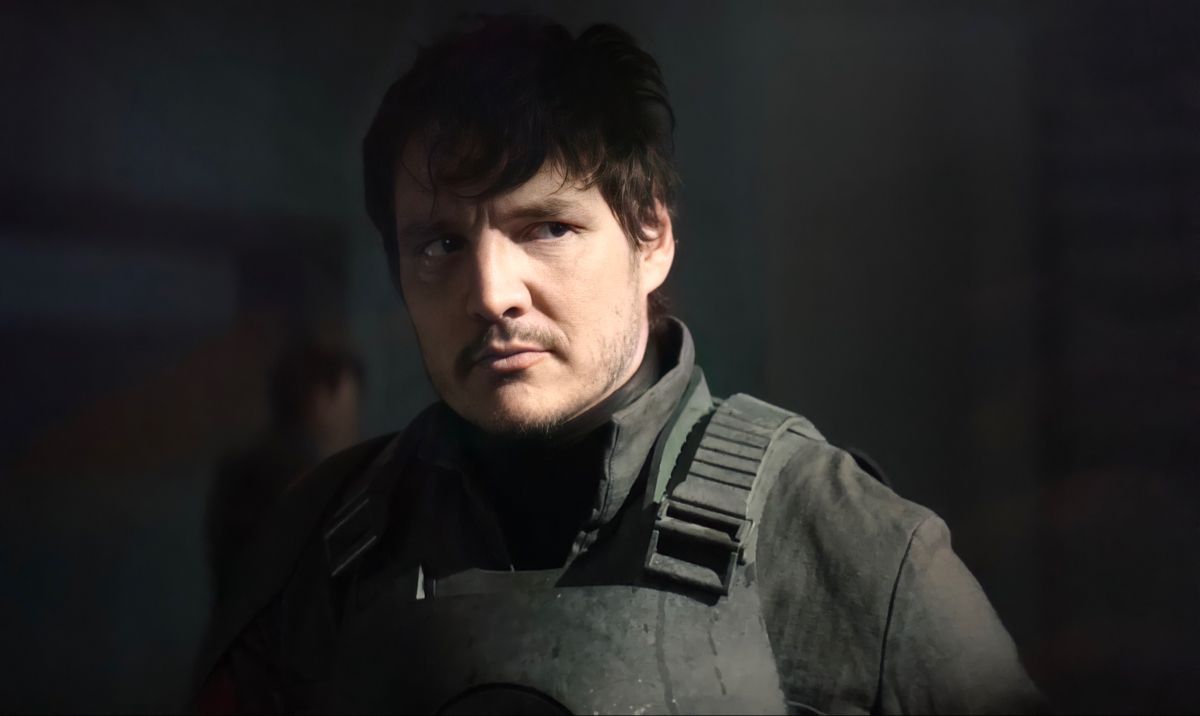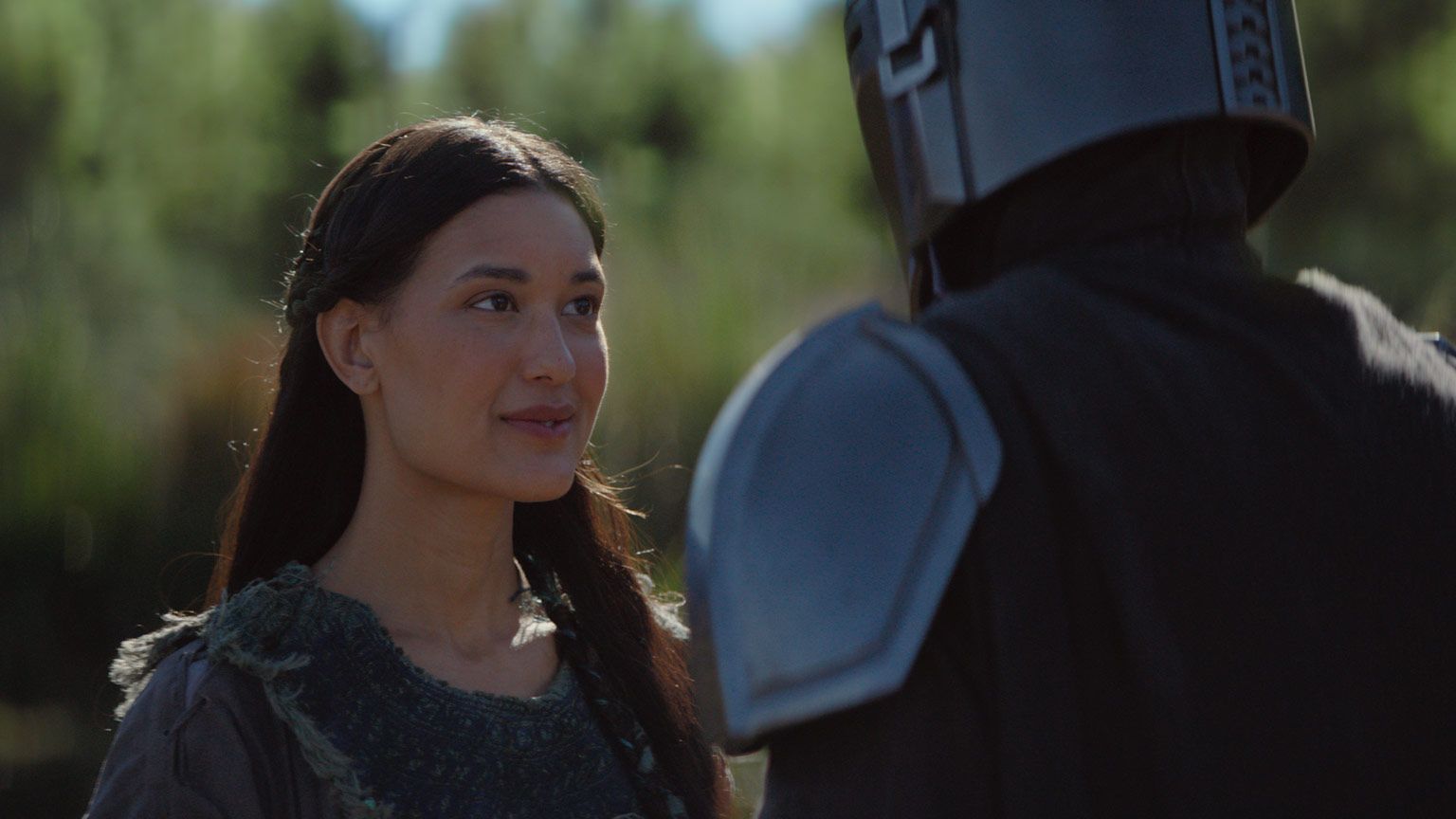Since George Lucas first dreamed up the existence of Star Wars, it has been a truth universally acknowledged that the franchise borrows from real-life religion and culture. It all makes sense when you consider that before Lucas made his venture into film, he was a student of anthropology. The cultures, the societal patterns, historical incidents, and the rich mythology that he was exposed to all became the foundation of the universe that he created. While Lucas may no longer be involved with the franchise creatively, his academic influences still feel like a driving force of what goes into the creation of new characters. In particular, the very ethos of Din Djarin (Pedro Pascal) evokes reflection on the impact that isolated cults have on the upbringing of a foundling.
Following the release of “Return of The Mandalorian,” the fifth episode of The Book of Boba Fett, a conversation about religious trauma seems more relevant than ever. In the episode we see Din Djarin seeking out what remains of his covert and reverting, though subtly, to the man that he was before Grogu. He unwaveringly accepts The Armorer’s (Emily Swallow) word as absolute truth, he relinquishes his beskar spear, and he submits to once again being a cog in the machine that is the Children of the Watch. It may feel like character regression to some viewers — because it is, and it’s an action that is distinctly linked to a religious upbringing.
What’s so interesting about The Armorer’s reaction about Din removing his helmet is that she asks no follow-up questions. She is steadfast in her belief that the only way to be a true, dedicated follower of The Way is to uphold its rules without exception. Had she questioned him about the removal, she might have learned that his decision was the most Mandalorian course of action possible. Mandalorians are duty-bound to protect the foundlings in their care, and Din sacrificed his place within the Children of the Watch in order to protect Grogu. However, in the eyes of the Mandalore, he had committed a transgression in the removal of his helmet, and, because some religions do operate in absolutes with no room for the gray space between black and white, The Armorer had no reason to care about the why of his actions.
After the revelation that he broke this sacred vow, the specific verbiage used by Paz Viszla is interesting and for anyone with religious trauma, it probably set off warning sirens. An apostate is someone who renounces their religion, but for Din he didn’t technically make that decision. Despite everything that happened to him in the last two seasons of The Mandalorian, he was still willing to return to the fold and follow The Armorer without question. Even when she makes it clear that he is no longer a Mandalorian in name, he immediately resorts to supplication—begging her for atonement and forgiveness. And where might he find redemption? By dipping into the unreachable water in the mines on Mandalore. It’s an unmistakable allusion to baptism. It’s not uncommon for followers of Christianity (specifically Baptist, in this case) to feel pressured into taking a dip in the baptismal waters to erase their sins and recommit themselves to the religion.
Where the first season of The Mandalorian introduced us to Din Djarin, the second season was a study of how to deconstruct a Mandalorian. In the finale of the first season, his helmet is removed in order to save his life, but it doesn’t technically break the creed because it was only a droid that saw his face and later met a sad fate. But in “The Believer,” Din had been faced with an unavoidable situation that forced him to not only take off his armor and wear a Stormtrooper’s armor, but to remove his helmet in a room full of enemies. And ultimately there is no question about whether his choice was wrong or right—he acted like a parent who was willing to do anything to get his child back.
“The Believer” also makes an interesting point in showing that the way in which Din fights—like a Mandalorian—directly leads to him being hurt when he’s wearing the Stormtrooper armor. If you take that and compare it to the way he wields the Darksaber in “Return of the Mandalorian,” a case could be made that in order to successfully wield the blade, he simply cannot be a Mandalorian. Moving forward it seems like he will have to figure out who he is without the omnipresent Creed driving his actions and influencing his decisions. This is a phenomenon that so many former believers recognize as the unlearning process. What once worked for them no longer works for them outside of the constraints of religious pressure. Even the prophecy that The Armorer delivers seems to imply that maybe the person meant to rule and unite Mandalore is someone who doesn’t follow the Creed—it would certainly be a deviation from those that ran Mandalore into the ground and the qualms about who belongs within the Mandalorians. A foundling raised in the Watch, who broke the Creed to protect his own foundling, seems like the right person to unify a broken culture.
The execution of Din’s crisis of faith was beautiful too, because in the lead up to this moment there were already cracks in his armor. Cobb Vanth (Timothy Olyphant) provided the first chip in showing him that anyone can wear the armor, Bo-Katan (Katee Sackhoff) critiqued the Children of the Watch and showed that Mandalorians born into the culture can remove their helmets (in “The Heiress,” which was also directed by Bryce Dallas Howard), and Boba Fett (Temuera Morrison) showed him an alternative route that his own life could have taken. In the second season, Din lost everything — his home, the Razor Crest, the Child (both to Moff Gideon (Giancarlo Esposito) and then to Luke Skywalker), and his sense of identity as he tried to figure out who he was as a Mandalorian. As anyone who has drifted away from the religion that they were raised in will understand, the desire to return to it in moments of extreme stress and upheaval is completely natural.
Religion fundamentally transforms how your brain reacts to pretty much anything in life. Through Din's eyes, we learn that he has been dedicated to his life within the Children of the Watch since he was taken in as a child. He feels obligated to provide to them and to essentially pay a tithe to the collective because they saved him and give him life. Throughout the series, he has a very sheltered view of the world and is largely oblivious to current events and even the history of Mandalorians—which is an intentional choice by the Watch. You can keep your followers submissive if they have no frame of reference for the outside world, only that what goes on out there is bad. And he has been trained to feel that way about other Mandalorians, through the way that he reacts to Bo-Katan removing her helmet. His immediate reaction is to be hostile and lash out. He was a child when he was first introduced to The Way and the fear of being ostracized from the only family he has likely motivated him to avoid learning anything outside what the covert has taught him.
Even going back to the first season of The Mandalorian, in another episode directed by Howard, the series used a woman as a source of temptation in "The Sanctuary." Early in his experience as the Child’s caretaker, Din is introduced to Omera (Julia Jones) who acts very much as "an angel of the hearth." She’s a single mother, with impressive combat skills, and a giving heart. She presents a tempting offer to Din—he could settle down on Sorgan, remove his helmet, and indulge in a peaceful life—but almost immediately he is reminded of his life outside this sanctum. This is also an example of how The Mandalorian also uses phrasing that is inherently linked to Christianity. The Child is clearly influenced by the religious iconography of the Madonna and Child and there are episodes entitled “The Believer,” “The Sanctuary,” “The Sin,” “The Redemption”—all of which evoke very specific images for anyone even remotely familiar with these terms in religion.
Unlearning is the hardest part of removing yourself from a toxic and limiting religious environment. For Din, he was forcefully removed from the faith, which poses new challenges for how he will process that trauma after “Return of the Mandalorian.” He was willing to reshape himself to fit back into the covert, but their unmovable ideologies prevented that. Even after he’s cast out by The Armorer, he still refers to himself as a Mandalorian and cites it as his religion. Putting aside something that is so inherently bound to your identity is a slow and painful process.
What’s intriguing is the fact that Howard is the director of three episodes that go the furthest in approaching Din’s connection to The Children of the Watch — “The Sanctuary,” “The Heiress,” and “Return of the Mandalorian.” Hopefully, she’ll play a bigger part in the third season of The Mandalorian as its lead continues to unpack the trauma associated with his upbringing; she clearly understands how to present the tension and delivery with nuance and introspection. Din has been forced to live an isolated existence, kow-towing to religious ideologies that never had his best interests in mind and by extension deliver hypocritical verdicts that seek to punish him for doing the right thing. The narrative direction that Din Djarin’s journey is headed in feels like an allegory for religious trauma, and to see it explored through the lens of Star Wars is as thrilling as it is heartbreaking for those of us who recognize a part of ourselves in the character.




